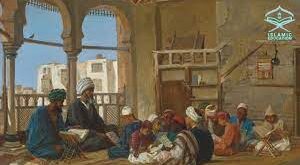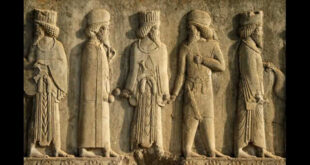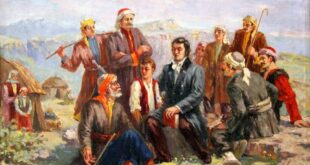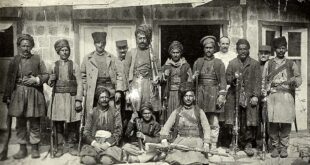Erbil, also called Hawler (Kurdish: ھەولێر ,Hewlêr[3] Arabic: أربيل, romanized: Arbīl,[4] Syriac: ܐܲܪܒܹܝܠ,[5] or Arbel)[6] and known in ancient history as Arbela, is the capital and most populated city in the Kurdistan Region of Iraq.[7] There is no current census of the city and official population statistics are not available, its population is estimated to be around 1,200,000.[2]
|
Erbil
ھەولێر
|
|
|---|---|

|
|
| Nickname(s): | |
| Coordinates: 36.191188°N 44.009189°E | |
| Country | |
| Region | |
| Governorate | Erbil |
| Government | |
| • Mayor | Omed Khoshnaw |
| Area | |
| • Total | 115 km2 (44 sq mi) |
| • Land | 113 km2 (44 sq mi) |
| • Water | 2 km2 (0.8 sq mi) |
| Elevation | 390 m (1,280 ft) |
| Population
(2021 estimate)
|
|
| • Total | 1,200,000[2] |
| Demonym(s) | Hawleri |
| Time zone | UTC+3 (AST) |
| Postal code |
44001
|
| Area code(s) | 066 |
| Website | HawlerGov.org |
Human settlement at Erbil may be dated back to the fifth millennium BC.[8] At the heart of the city is the ancient Citadel of Erbil and Mudhafaria Minaret. The earliest historical reference to the region dates to the Third Dynasty of Ur of Sumer, when King Shulgi mentioned the city of Urbilum. The city was later conquered by the Assyrians.[9][10]
Erbil became an integral part of the kingdom of Assyria by the 21st century BC through to the end of the seventh century BC, after it was captured by the Gutians, and it was known in Assyrian annals variously as Urbilim, Arbela and Arba-ilu. Subsequent to this, it was part of the geopolitical province of Assyria under several empires in turn, including the Median Empire, the Achaemenid Empire (Achaemenid Assyria), Macedonian Empire, Seleucid Empire, Armenian Empire, Parthian Empire, Roman Assyria and Sasanian Empire, as well as being the capital of the tributary state of Adiabene between the mid-second century BC and early second century AD.
Following the Muslim conquest of Persia, it no longer remained a unitary region, and during the Middle Ages, the city came to be ruled by the Seljuk and Ottoman empires.[11]
Erbil’s archaeological museum houses a large collection of pre-Islamic artefacts, particularly the art of Mesopotamia, and is a center for archaeological projects in the area.[12] The city was designated as Arab Tourism Capital 2014 by the Arab Council of Tourism.[13][14] In July 2014, the Citadel of Arbil was inscribed as a World Heritage Site.
The city has a Kurdish majority with ethnically diverse population of Turkmens,[15] Assyrians, Arabs and Armenians. It is equally religiously diverse, with believers of Sunni Islam, Shia Islam, Christianity, Yarsanism and Yazidism
Sources
- Sourdel, D. (2010), “Irbil”, in Bearman, P.; Bianquis, Th.; Bosworth, C.E.; van Donzel, E.; Heinrichs, W.P. (eds.), Encyclopaedia of Islam, Second Edition, Brill Online, OCLC 624382576
- Grousset, René, The Empire of the Steppes, (Translated from the French by Naomi Walford), New Brunswick: Rutgers University Press (1970)
 History of Kurdistan
History of Kurdistan




